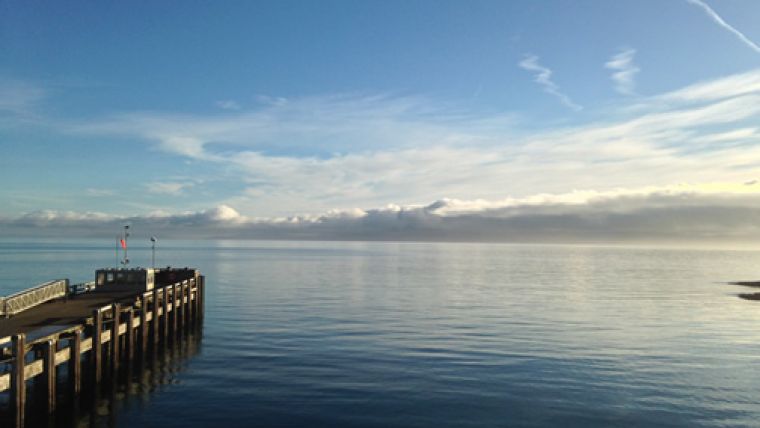Monitoring Network for Scottish Ports
Following a competitive tendering process Caledonian Maritime Assets Limited (CMAL, UK), which owns many ferries, ports and harbours in West Scotland, has procured a network of 15 tide and weather stations from instrumentation specialist OTT Hydrometry. The monitoring equipment provides live data on port conditions to enable the ferry sailing decisions to be made in a timely manner.
Each monitor is located adjacent to the main berthing area on the pier with a lockable GRP control box. The system is comprised of: an OTT radar level sensor; a Lüfft ultrasonic weather monitor measuring wind speed, gust and direction, air temperature and barometric pressure; an Adcon radio unit with back-up batteries and a marine grade antenna. The radar tide level sensor is an OTT RLS, a non-contact sensor employing pulse radar technology with a large 35m measurement range. Both the RLS and the weather sensors, which have no moving parts, have extremely low power consumption, which is vitally important for installations at remote sites. At two locations it was not possible to install a radar sensor so an OTT CBS (bubbler sensor) was installed providing comparable levels of accuracy and reliability.
With multiple sites in island locations, remote access to accurate local data providing live information on tide level and key climatic conditions could facilitate substantial improvements to the service by aiding the Masters to make a more informed decision at an earlier stage in the voyage – in some instances even before departing the previous port or harbour.
OTT installed the first monitoring station in August 2014 and the network is now almost complete with sensors providing data every 1 minute via UHF radio to ‘gateways’ in the ferry offices, which then submit the data via the internet to a central server, which can be remotely accessed by authorised users.
The system monitors the tide level in CMAL’s statutory harbours and it provides essential weather information for the ports. In the past, these measurements were taken manually, so the availability of continuous multiparameter data is an enormous improvement.
The berthing of ferries is a highly skilled job, particularly during bad weather, and the decision on whether a specific ferry can safely berth at a specific port is subjective and ultimately can only be taken by the ferry master.
The safety considerations involved with the berthing of ferries relates to passengers and crew but as well as to the pier hands that assist with mooring operations in a wide variety of often extreme weather conditions. Severe weather berthing conditions can also potentially cause damage to ferries and the structures within the ports, so again, detailed data on localised conditions can help prevent accidents and support insurance claims when necessary.
The availability of live data on port conditions therefore enables the ferry masters to make better informed decisions at an earlier stage, thereby saving time, fuel and costs. It also means that passengers are provided with earlier warnings of potential ferry cancellation.
Now that the CMAL monitoring system is installed, David is looking for ways to leverage the value of the data. For example, radio data transmission works very well over water, so it should be possible to fit the same technology on ferries so that the ferry masters can access the data directly, instead of having to call the port office for a verbal update. The OTT monitoring network also incorporates an email alert system, and whilst this has not yet been configured, it will be possible in the future for ferry masters to receive email alerts warning them when pre-specified port conditions arise. Intention is to make the data available to the public as part of an enhanced harbours information system. However, when a ferry has berthed, with the monitoring system being located on the pier, the vessel can cause a wind shadow; which means the wind data during that period can be potentially misleading. It has to be remembered that this system remains only an aid to navigation.














